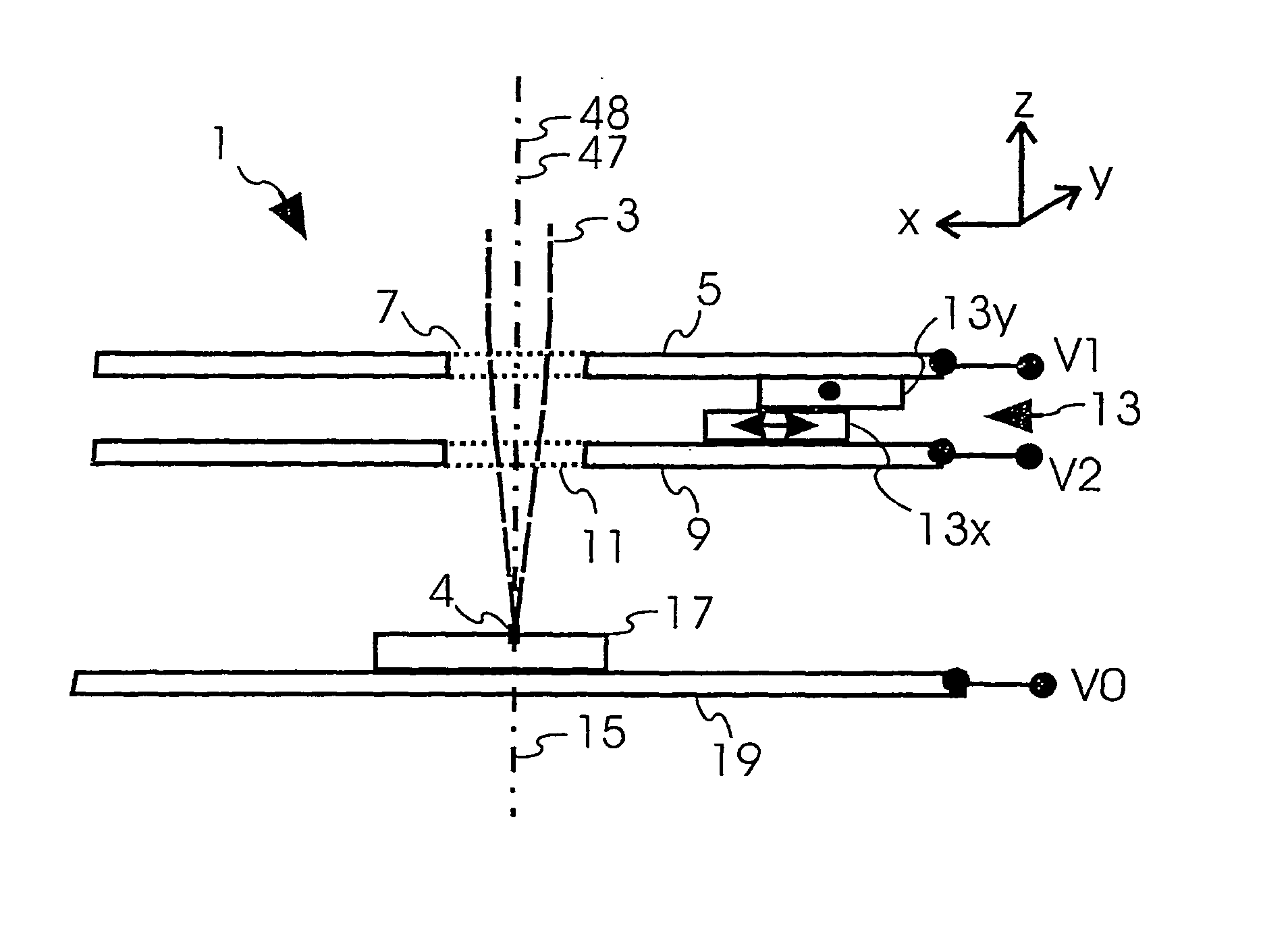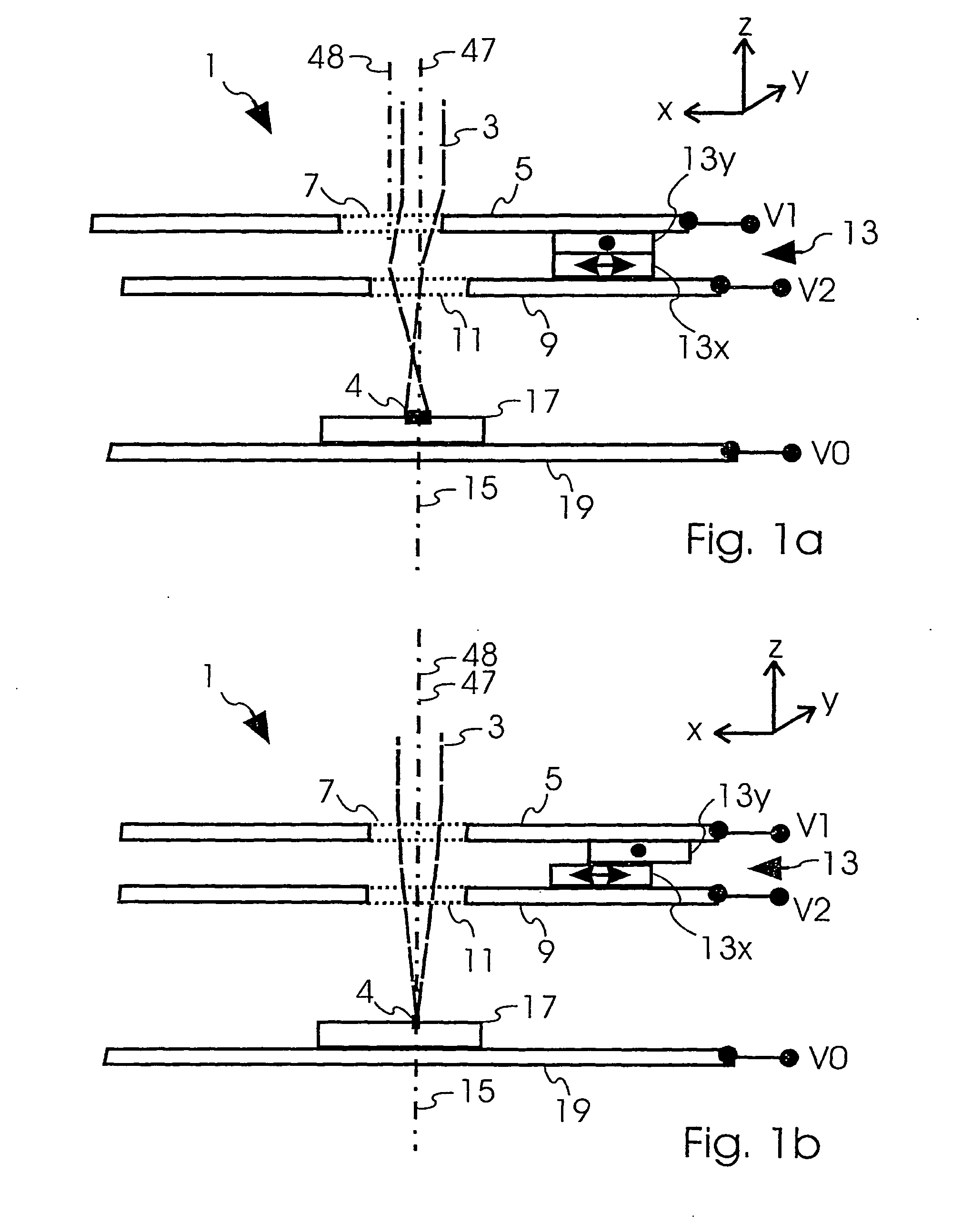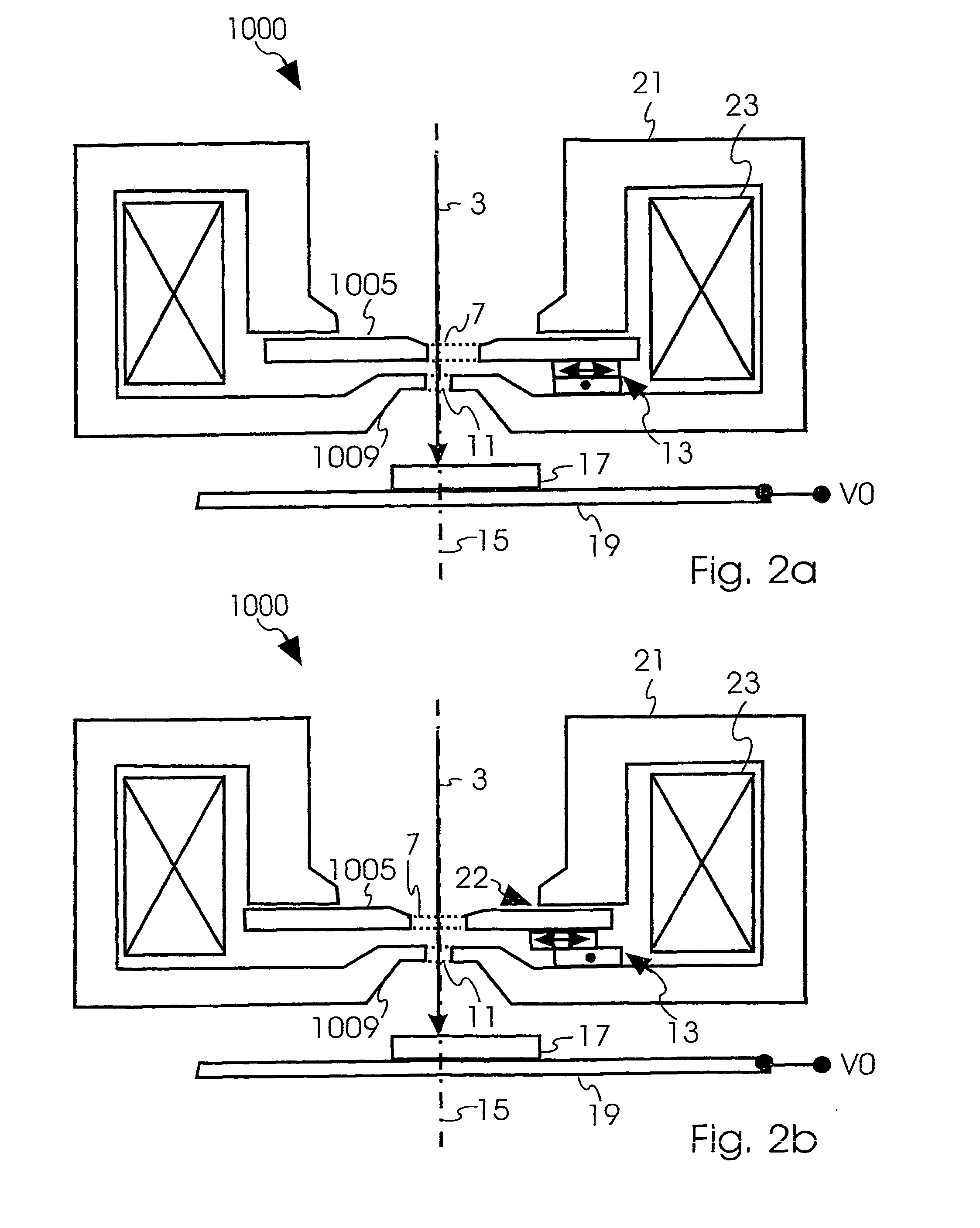Beam Optical Component Having a Charged Particle Lens
- Summary
- Abstract
- Description
- Claims
- Application Information
AI Technical Summary
Benefits of technology
Problems solved by technology
Method used
Image
Examples
third embodiment
[0066]FIG. 3 represents a third embodiment according to the invention. FIG. 3 depicts a beam optical component having an electrostatic charged particle lens 1 having first, second and third electrodes 5, 9, 25, each having respective first, second and third openings 7, 11, 27. First electrode 5 is connected to third voltage V3, second electrode 9 is connected to second voltage V2 and third electrode 25 to first voltage V1. For many applications, the outer two electrodes, i.e. first and third electrodes 5, 25, are operated at the same voltage. In this case, the electrostatic field within the lens hardly interferes with regions surrounding charged particle lens 1. In this case, charged particle lens 1 is operated as “Einzel-lens”. If first and third voltages V1 and V3 are not the same, charged particle lens 1 is usually referred to as immersion lens.
[0067]In the example of FIG. 3, first driving means 13 are used to align first opening 7 of first electrode 5 to second opening 11 and th...
fourth embodiment
[0073]FIG. 4 discloses a fourth embodiment according to the invention. The charged particle lens 1 of the beam optical component of FIG. 4 is the same as the one of FIG. 3, with the difference that it includes second driving means 42 for aligning second opening 11 with respect to the third opening 27 of the third electrode 25. Note that in FIG. 4, second electrode 9 is connected with first voltage V1, third electrode 25 is connected with second voltage V2, and first electrode 5 is connected with third voltage V3. Further, second driving means 42 are connected on one side to second electrode 9 and on the other side to second base plate 46 whose position is fixed with respect to the symmetry axis 15. With first driving means 13 and second driving means 42, first opening 7 and second opening 11 can be aligned to symmetry axis 15 independently. This makes it possible to align the first and second openings 7, 11 independently to the beam axis 3 which usually coincides with the symmetry a...
fifth embodiment
[0074]FIG. 5 discloses a fifth embodiment according to the invention. In FIG. 5, the beam optical component includes an electrostatic charged particle lens 1 of the type as shown in FIG. 3, and a charged particle beam source 62. The charged particle beam source 62 of FIG. 5 is included of an emitter 61 and an extracting electrode 60 to extract charged particles by means of extracting voltage Vext from emitter 61 into a vacuum to form charged particle beam 3. The beam optical component of FIG. 5 represents a compact design of a device that is capable of focussing a charged particle beam.
[0075]Note that in FIG. 5, first electrode 5 is shaped and positioned with respect to charged particle beam source 62 to provide that first opening 7 serves as a beam aperture 50. Therefore, in order to minimize scattering of the charged particle beam 3 at the wall of the opening, beam aperture 50 is characterized by a knife-like edge that defines the size of opening 7. With first electrode 5 acting a...
PUM
 Login to View More
Login to View More Abstract
Description
Claims
Application Information
 Login to View More
Login to View More - R&D
- Intellectual Property
- Life Sciences
- Materials
- Tech Scout
- Unparalleled Data Quality
- Higher Quality Content
- 60% Fewer Hallucinations
Browse by: Latest US Patents, China's latest patents, Technical Efficacy Thesaurus, Application Domain, Technology Topic, Popular Technical Reports.
© 2025 PatSnap. All rights reserved.Legal|Privacy policy|Modern Slavery Act Transparency Statement|Sitemap|About US| Contact US: help@patsnap.com



